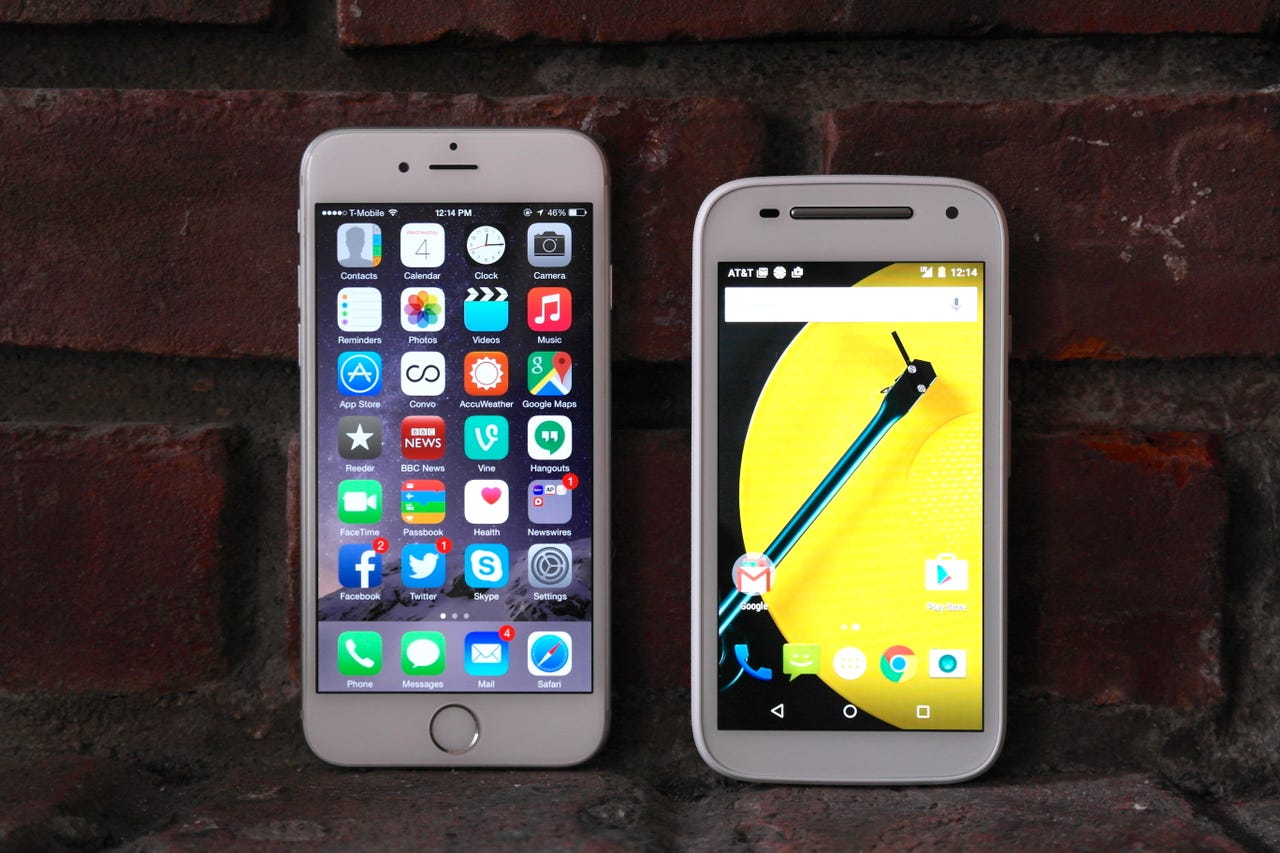Hands-on with the new Moto E budget smartphone: in pictures


Moto E: An entry-level Android phone
You may not want to put the iPhone 6 and the Moto E together -- especially if you have yet to own one. You might not want that iPhone, after all.
Fits comfortably in your hand
The Moto E probably won't win any awards for its far-from-breathtaking design, but it's sturdy and comfortable to hold.
Display and screen resolution
It's not the sharpest of screens, but it's far from unreasonable for the cost.
Screen resolution isn't bad (but not great)
The display isn't bad. It's stronger than a 720p display, but not quite 1080p. It's noticeable. You can probably see the pixels on the display. But most newcomers won't even notice it.
Phone design
The rear-camera has a modest 5-megapixel sensor, along with a basic VGA front-facing camera for video calling.
Micro-USB port, headphone jack included
The device itself is light at 145g (5.1 ounces).
Expandable storage up to 32GB
The Qualcomm 1.2GHz quad-core powered phone lands with a slightly larger 4.5-inch display.
Plastic shell with pop-out bands
While the first-generation model had a plastic backing that could be swapped and changed, this version has an outer band with a range of vibrant colors.
Display and screen resolution
Motorola says the display has a pixel density of about 245 pixels-per-inch, or around half that of the iPhone 6. It's certainly noticeable, but not a deal-breaker in a low-budget device.
A strong entry-level device
The Moto E with LTE comes with Android 5.0 "Lollipop," which includes the latest software developments, including device encryption.
microSD and Micro-SIM slots
You can bump the 8GB internal storage to 32GB thanks to the inclusion of a microSD memory card slot.
Design is slim, light, but with added battery bulk
The phone is light and slim, but it could be a lot slimmer if Motorola wanted to compromise on battery life.
Design? Meh. But not bad for sub-$150
Don't expect much in terms of design aesthetic. But it's not bad for an entry level, sub-$150 Android phone.
Micro-USB standard for charging
Like all other Android phones, the Moto E comes with a micro-USB port for universal charging.
Compared to an iPhone...
Compared to an iPhone 6, it's almost double the thickness. But it's almost unnoticeable to the vast majority of Android newcomers.
Compared to an iPhone...
Compared to an iPhone 6, it's almost double the thickness. But it's almost unnoticeable to the vast majority of Android newcomers.